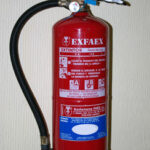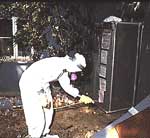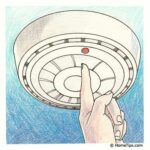This DIY guide will teach you how natural gas detectors work, a device that detects the presence of natural gas in the air.
Water heaters, furnaces, stoves, cooktops, gas fireplaces, and other appliances that utilize natural gas as a fuel can present serious safety hazards if they malfunction.
If natural gas leaks into your home, just turning on or off a light switch can be enough to ignite the fumes and cause an explosion. Low levels of escaped gas may not be harmful to your health, but a severe gas leak can replace all the oxygen in a room, leading to asphyxia. And carbon monoxide, which is released when natural gas is burned, is toxic to breathe.
Combustion gasses from natural gas heating systems are the leading cause of carbon monoxide deaths in the United States. Fortunately, you can buy devices that will detect natural gas or carbon monoxide. Here we look at the natural gas detectors; for information on carbon monoxide detectors, see Carbon Monoxide Detectors Buying Guide.
In its natural form, methane, commonly known as natural gas, is odorless. Gas companies add an ingredient, called mercaptan, to give it a detectable sulfur odor that resembles raw garlic or rotten eggs. This odor is strong enough to be easily detected by most people but individuals with a diminished sense of smell may not recognize it. A natural gas detector is important for these people because it will sound an alarm in the event of a natural gas leak.
Natural gas detectors are designed to sound an alarm when the gas is at or below 25% of the Lower Explosive Limit (LEL). These detectors will not detect fire or smoke but only a leak of natural gas.
Duct Detectors
A duct detector samples air passing through fans, blowers, and air- conditioning systems, preventing the spread of toxic gases throughout the protected area. This type of smoke detector monitors the HVAC air traveling through ductwork by means of a photoelectric sensor. It has the advantage of being able to sample a much greater volume of air than an ordinary smoke detector can.
Duct detectors are often included in the installation of ventilation and exhaust ductwork of facilities with mainframe computers and tape drives. Duct detectors, however, are not a substitute for smoke detectors that provide early warning detection.



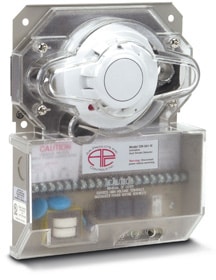
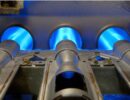


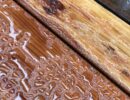
 Don Vandervort writes or edits every article at HomeTips. Don has:
Don Vandervort writes or edits every article at HomeTips. Don has:
